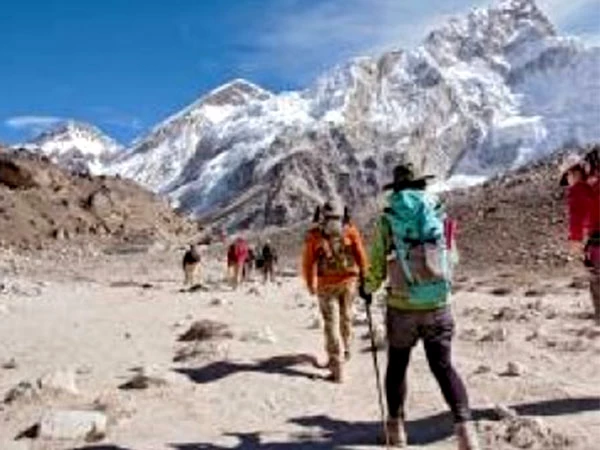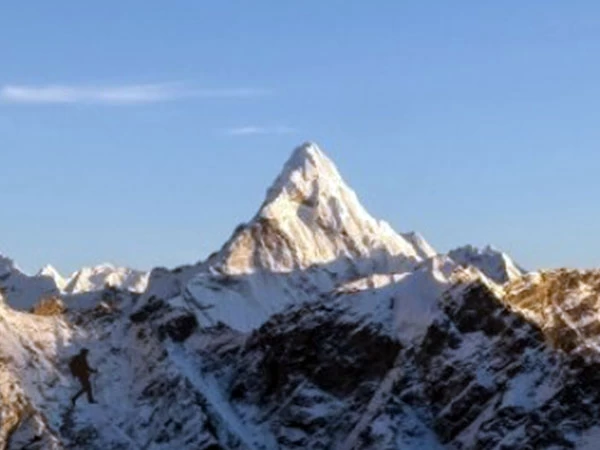Complete Guide to Everest Base Camp
Lionized as one of the most sought-out trekking destinations in the world, Everest Base Camp (EBC) is your sure-shot ticket to the solemn and blissful mountainous sphere. Nestled in the heart of the Himalayas, the trek to Everest Base Camp (EBC) sends tides of intrigue and mystique to the passionate mountain climbers. Located at a whopping height of 5364 meters above sea level, the EBC trek furnishes an overwhelming view of the splendid Himalayan range. The major highlight of the trek is the up-close and magnified view of the highest peak in the world, Mount Everest (8848 meters). Furthermore, it welcomes you to the ecologically rich Sagarmatha National Park where a significant species of the plant and animal kingdom reside. Along the way, prepare yourselves to fall prey to the beatific milieu and hospitality showcased by the native inhabitants of the Khumbu Valley region. The journey is filled with small tea houses, lush greenery, Buddhist monasteries, and colorful prayer flags.
The path you should dwell on…
Before 1964 A.D, there existed only two major ways to get to the South Base Camp of Mt. Everest in Nepal. First was the five-week-long trek from the capital Kathmandu and the second one was 8-9 day's long trek from Jiri to Namche Bazaar and then toward Mt. Everest. Later on, after the establishment of the Himalayan Trust, created by Sir Edmund Hillary, a mountainside airport was built in Lukla. Although the airport is regarded as one of the most dangerous airports in the world, it sure gives a shorter route to trekkers who wanted to reach EBC quickly.
The classic Solukhumbu Trek to EBC is the most common and direct path as it takes you to Kala Patthar, which is known to offer the most breath-taking view of Mt. Everest. This trek duration is 2 weeks. The trail is well-made and the travelers have the chance to familiarize themselves with the elevated height and have ample time to acclimatize.
Some of the alternative routes to Everest Base Camp are:
1. Jiri to Everest Base Camp (19-21 Days of Trekking)
The trail from Jiri to EBC is one for a slow walker. The main advantage of this route is that is less crowded and provides a spectacular landscape of the region along with a chance to experience the rich Solu Sherpa culture.
2. Tumlingtar to Everest Base Camp (21- 23 Days of Trekking)
Tumlingtar lies in the Eastern Region of Nepal. Moving towards Lukla from Tumlingtar can be gruesome as there is a drastic transition in altitude and temperature when compared to the location where the trip commences. The route is filled with Brahmin and Chhetri villages. This is a relatively difficult trek compared to the one that begins at Jiri.
3. Gokyo over Cho La Pass (17-18 days of trekking)
This one is treacherous as the weather prevalent in this region is unpredictable and a bit extreme. From Namche, the trekkers will move westward towards Gokyo region that is well-known for its high-altitude human settlements and serene lake series. From Gokyo, the trekkers will descend to Lobuche and head towards the base camp.
How difficult is it to get to Everest Base Camp (EBC)?
One of the many things EBC is recognized for is its painstaking trail. The trek is not a bed of roses and it should not be underestimated in any manner. You should be well prepared to overcome all the hurdles that you will likely encounter throughout the journey. There are numerous factors that must be considered while keeping the strain during the journey at bay. Some of them are discussed below:
1. The soaring height of EBC
Adapting to the elevating altitude is an exacting job, especially for the ones who live near the sea level. Therefore, it is recommended that such individuals gradually cope up with the towering heights in order to be less susceptible to altitude sickness. A slow and steady ascent will also help in acclimatization. The outstanding elevation of Kala Patthar (5500 meters) should not be overlooked as even the local people of the area have difficulty dealing with the unpredictable climatic conditions.
2. The total length of the trek
It might sound astonishing but a trekker covers a jaw-dropping distance of 130 kilometers on this journey. So, in order to complete the trek easily in 10 days, you will likely have to accustom yourselves in walking 15 kilometers a day, beforehand. Another factor to consider is also the rugged topography which comprises of varying number and length of up-hill and downhill trails.
3. Proper Training
To be honest, EBC trek is not cut out for individuals with no preliminary trekking experience. Even individuals with moderate trekking experience are recommended to undergo a rigorous training for four to five months before the main event. A fixed fitness regime subsuming jogging, running, shoulder-training and squatting help tighten up the thigh muscles and help you walk longer distances before wearing you down.
A checklist that might come in handy
With overwhelming Himalayan extremities involved during the trek, your primal instinct must be to not let the daunting cross-roads to EBC provoke your trepidations. Be sure to carry all of the following items in order to ensure a safe and secure trek.
1. Sleeping Bag (Fiberfill or down) Side note: You can easily rent one in Kathmandu to save extra bucks
2. Parka (Fiberfill or down) or a Ski Jacket
3. Thick sweaters, woolen shirt or an acrylic pile jacket
4. Duffle bag or a durable trekking bag
5. Rucksack (Waterproof)
6. Water bottle (1 liter)
7. Flashlight
8. Swiss Knife
9. Trekking shoes with sharp grip
10. Comfortable trousers and inner wear
11. Towel and toilet kit
12. First Aid Kit (bandages, DFO Spray)
13. Prescribed medications (In case of Altitude Sickness)
14. Thick gloves/mittens/cap/hat/scarves
15. Trekking sticks
16. Sunglasses with polarized lenses
17. High-quality SPF Sunscreen cream
18. Energy Bars and light snacks
19. Cash (Nepali Currency)
20. National ID (Just in case of emergency)
Best time and season for Everest Base Camp Trek
The best time to ascend to the Everest base camp (EBC) is considered to be during the spring (March to May) and autumn (September to November) seasons. These time periods are characterized by clear skies and an adaptive temperature which are more convenient to the trekkers. Apart from the moderate weather patterns, spring season offers a wide multitude of blossoming flowers which contribute towards the aesthetic feature of the trek. The dense deciduous forests are garnished with Rhododendron, the national flower of Nepal which is a feast for the eyes during the grinding journey. Mid-March is regarded as one of the busiest times for trek as it is also the best time window available for the Mount Everest expedition. The guest houses and lodges are full of guests and usually occupied during this time frame. Autumn is another feasible season for the EBC trek, which offers an endurable temperature and a relatively less degree of cloud cover. Aspiring trekkers to EBC should at all costs avoid commencing the journey during the monsoon (June to August) as the trails get slippery and accident-prone and also, during winter (December to February) when the scenic views get blocked and the unpredictable local microclimate including heavy snowfall and avalanches in the high altitude.
Is acclimatization important for Everest Base Camp Trek and Altitude Sickness?
The trek officially kick-starts at Lukla Airport (2840 meters) and reaches the highest up to Kala Patthar (5550 meters). It mainly falls under two altitude regions namely “high altitude” and “very high altitude” zones. The high elevation of the EBC trek unwittingly invites altitude sicknesses such as Acute Mountain Sickness (AMS), High Altitude Cerebral Edema (HACE) and High-Altitude Pulmonary Edema (HAPE). Therefore, it is quite important to be abreast of the symptoms and remedies of these sicknesses. Acclimatization is a crucial process which aids an individual’s body to adapt to the high-altitude surroundings that include diminishing levels of oxygen and a notable decrease in the air pressure. Each human body has a varying degree of response to different levels of altitude. Acclimatization cannot be omitted or taken for granted and plays a vital role while trekking at towering elevations.
There you go! All of the above-mentioned factors must be well-thought-out while planning to trek towards Everest Base Camp (EBC). Be sure to reflect on your health, travel-budget, time-constraints and scenic interests before embarking on this marvelous journey. Here’s hoping a safe and sound nature-travel experience to you. May you successfully conquer one of the most difficult treks in the world? A lifetime of an experience and unfathomable bliss awaits you at the base camp of the highest peak on the planet. So, tighten your shoelaces and take-in-charge of your will to go forth, the mighty Everest Base Camp expects your arrival!




